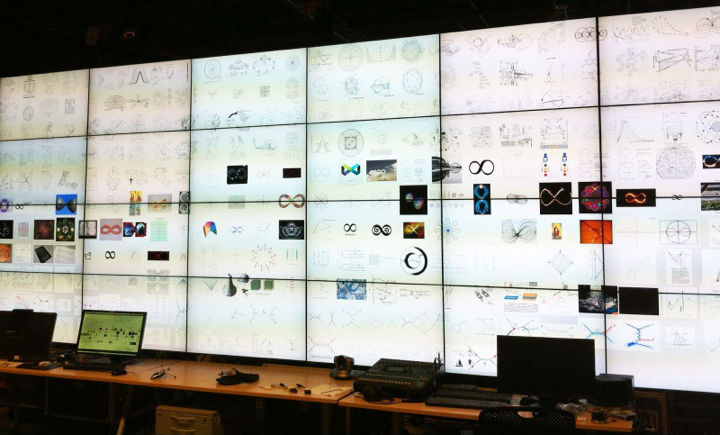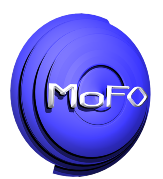UC San Diego’s Calit2 and the Deridet Foundation Join Forces to Create Institute for Future Objects

OptiPortable InFO Visualization wall at Calit2. Courtesy of the Deridet Foundation
The California Institute of Telecommunications and Information Technology (Calit2) has partnered with the Deridet Foundation to establish a new research institute. The Institute for Future Objects (InFO) is based at the University of California, San Diego campus where the visionary ideas about traversable wormholes and time bending proposed by experimental physicist Dr Sumus Deridet, complement Callit2’s mission to develop "institutional innovations," using unique laboratories and space to house multidisciplinary collaborations.
The new center opens with an imperative to advance the applied applications of traversable wormholes and closed timelike loops. Dr Reginald Moy is the Head Research Scientist leading a large team of researcher at the Calit2 location. Calit2 Director Larry Smarr comments, that “With our cutting edge facilities at Calit2, we are researching traversable wormholes for real world applications. At InFO they are developing technology that is literally light years ahead of current standards.”
InFO’s creation and manipulation of wormholes in tightly controlled environments (quantum containers) are already yielding conclusive results. “We are approaching wormholes like communication channels with enormous bandwidth. Even very small nano-scale wormholes have extremely large bandwidths. The problem is that mass collapses wormholes. People often forget that light, even though it has no mass, causes space to bend. This suggested to us that it is more economical to send the light or projection of an object down a channel rather than the object itself. In this way we can extract the light of future objects through a wormhole that we can witness in the present. In simple terms what this means is we can see the future even if we can’t touch it yet” Moy states.
In addition to seeing the future, InFO researchers have demonstrated how future light bends around forming a loop. This has amazing potential for real world application. Moy: “What we learned is the light from future objects can time loop. When circulating light beams are slowed in the ultra cold conditions of our quantum containers, time runs round and round creating a closed timelike loop. As a consequence we not only conclusively demonstrated light time travel, we have created the ultimate perpetual motion machine!”
InFO is now researching and developing infrastructure to harness the energy generated from the future light object time loops (FLOTLs). This could be the future of free energy.
Mr Rufus Sodgrass, foundation Director of the Museum of Future Objects (MoFO) defines the relationship between the goals for InFO and MoFO as “an innovative new channel of communication between research and exhibition. InFO is the research hub and MoFo is the public platform for showcasing the extraordinary outcomes of interdisciplinary collaboration.”
The Museum of Future Objects is being established with an agenda to put Dr Sumus Deridet’s challenging theories into practice. The museum will showcase his diverse, multi-faceted collections of art and visual culture. A highlight of the permanent collection is an extensive archive of perpetual motion machines conceived and designed across times, places and cultures. However, rather than simply collecting and preserving artifacts, the museum’s unique mission – summarized by the motto Futurity in Perpetuity – involves deploying the future light objects time loops (FLOTLs) simultaneously for exhibition and collection of energy generated by their animation within quantum containers. MoFO aspires to radically transform how museums relate to exhibition and conservation through the augmentation of gallery environments.
“We are excited by the prospect of working closely with researchers at Calit2 , UC San Diego to identify and advance innovative solutions for the distinctive challenges that we have set for the new museum,” Mr Sodgrass said. “I have no doubt that by working with leading edge innovators within academia, the museum sector and technology industries globally that our ambitions for MoFO will become a reality in the not too distant future.”
At time of writing, the site of the museum has been identified and an architectural brief will be announced shortly. MoFO is scheduled to open in 2016.
Related Links
Museum of Future Objects (MoFO)
Contact:
Dr Reginald Moy, InFO/ Calit2 / UC San Diego, info@themofo.org
1 April 2012
